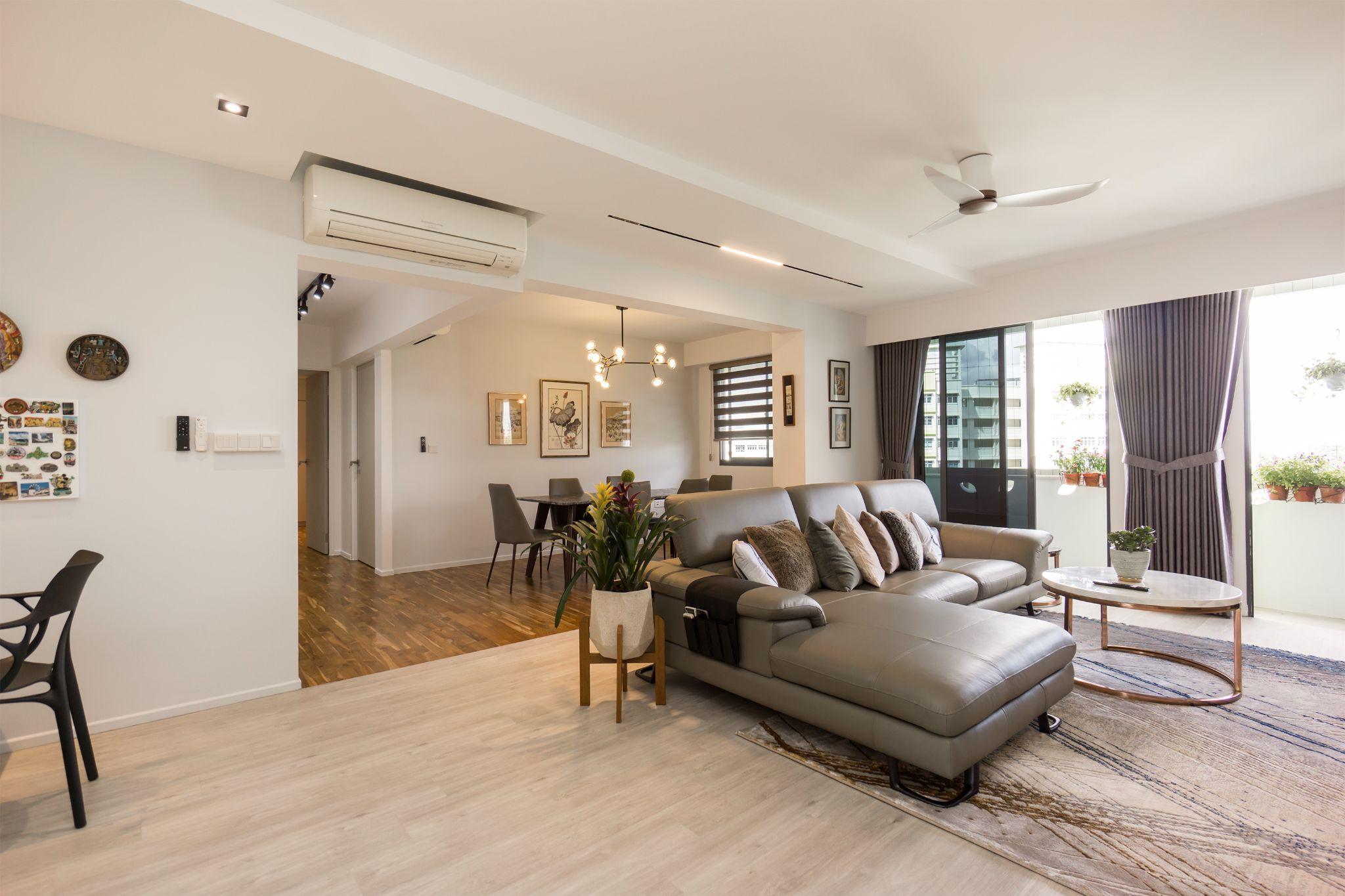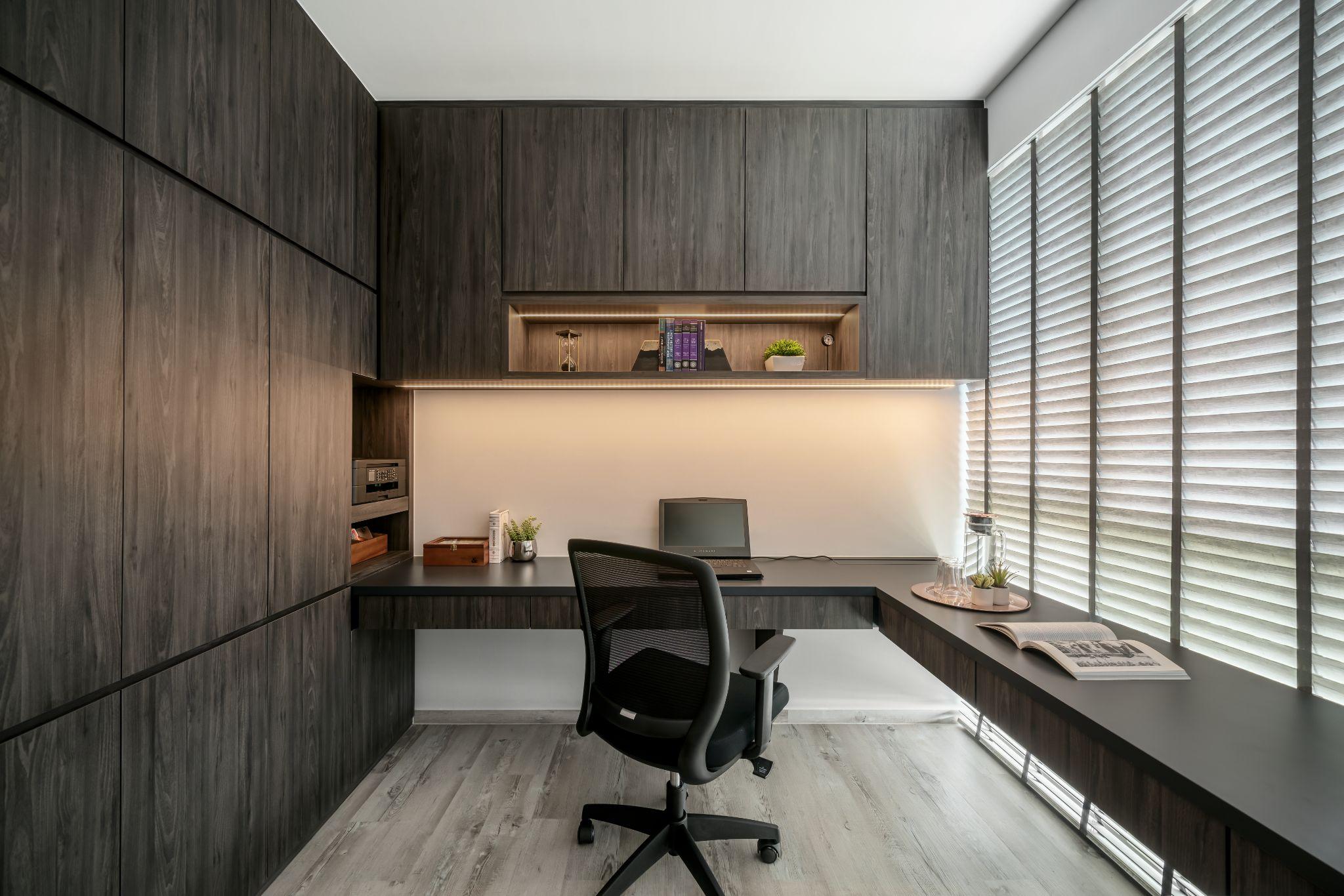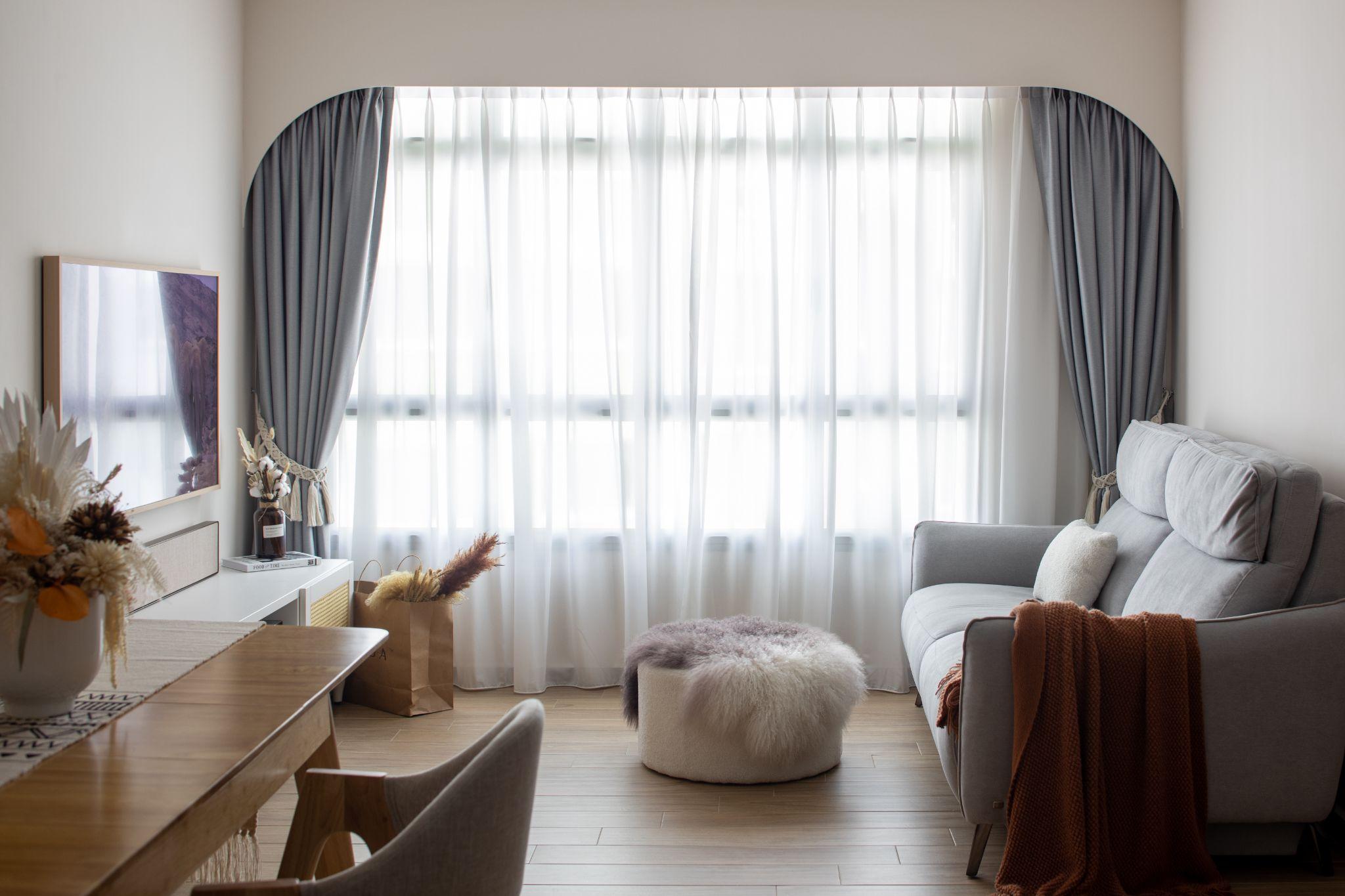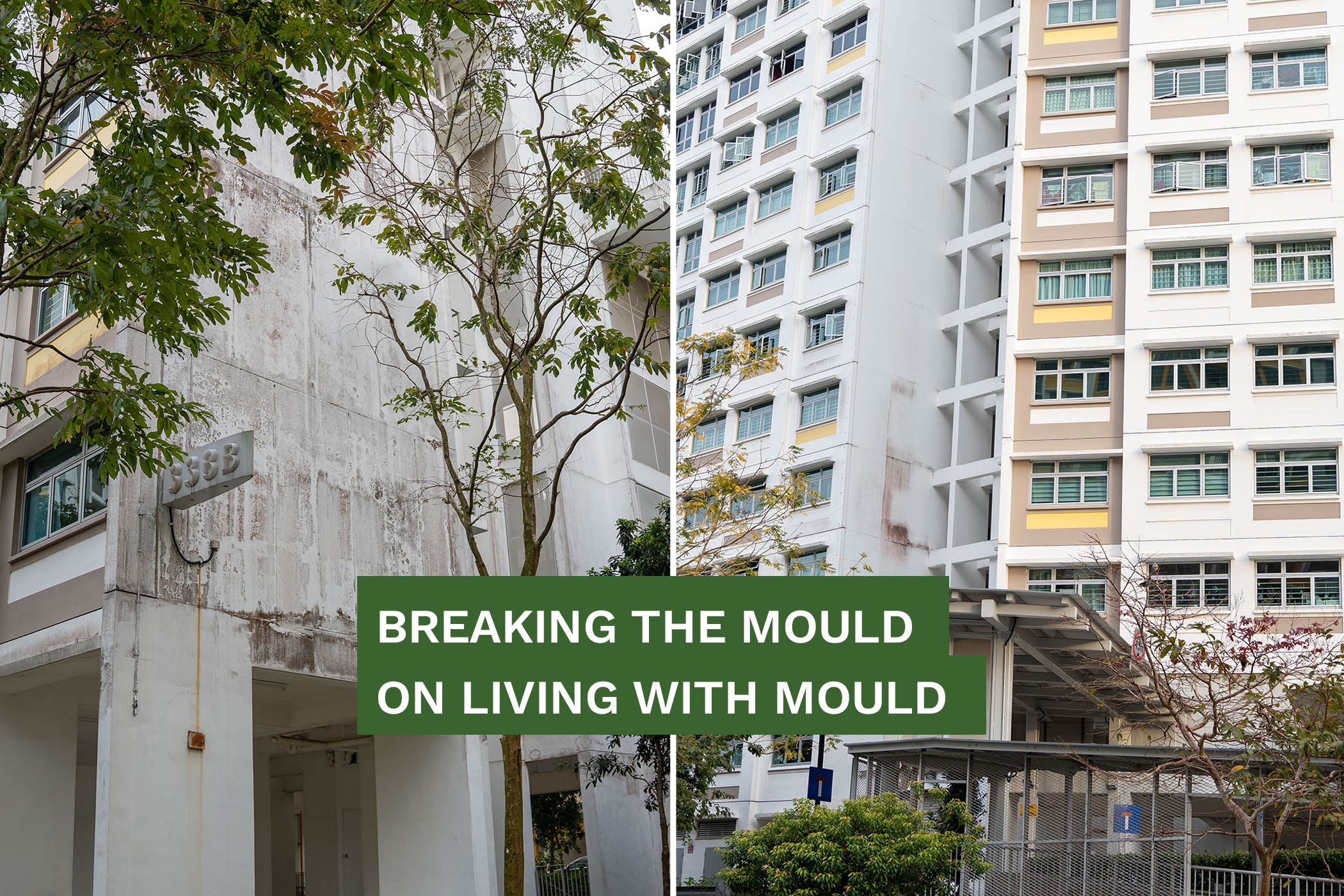
Vinyl vs Tile Flooring
What flooring to go with:
vinyl or tiles?
Admit it. You’re reading this because you’ve got to make a decision quick. A decision that’ll affect the rest of your life (well, most of it anyway). You want to know which flooring to go for: vinyl or tiles. Sadly, there’s no quick and easy answer. You’ll just have to read on, then see what’s best for you.
Variety
Vinyl flooring and tiles are just as varied as Singapore’s food — they come in loads of varieties.
Vinyl Flooring
Sheet vinyl represents the most affordable of them all. These flexible sheets come in rolls and can easily be cut by hand to precisely fit every nook and cranny you can find.
Vinyl composite tiles (VCTs) are doppelgangers of tiles but made of compressed PVC chips and limestone. Like their counterparts, they’re highly durable. Unlike them, they’re flexible and affordable in comparison. Their flexible nature also minimises pressure underfoot.
Luxury vinyl tiles (LVTs) come in tiles, both square or plank shaped, just like VCTs except that they look more like natural material. These are easy to install without glue. LVTs multiple layers not only protect them from scuff, it’s also how breath-taking designs are applied to the tile.
Tiles
Ceramic tiles are vinyl sheets of the tile world: affordable. However, when they’re chipped or cracked, it’s obvious on their surface print; they’re porous so unsuitable for wet environments; and they are less durable than other kinds of tiles.
Porcelain tiles are a step up from ceramic ones; much more durable. That said, some porcelain tiles are glazed. That means if it’s chipped, it’ll be just as obvious as ceramic ones.
Homogeneous tiles are a type of porcelain tile that is insanely durable. What makes this one stand out is that it’s a full-body porcelain tile — a tile where the colour runs throughout the material. When it chips, it’s far less obvious.
 Photo Credit : Home Philosophy (with proper selection of tiles, the overall design will look curated)
Photo Credit : Home Philosophy (with proper selection of tiles, the overall design will look curated)
Look and Comfort
Vinyl
When it comes to design, the sky’s the limit. Some of the better ones even mimic natural materials like tiles, wood, and marble really well. Plus, they’re designed to be soft underfoot. As such, dropped objects are less likely to break, and walking on it is easier on the joints.
Tiles
What they lack in variety, they make up for in natural beauty and prestige. For this reason, tiled houses tend to have better resale value. The downsides? (1) Poorly installed tiles produce a hollow sound. (2) Their incredible durability also means they’re painful to fall on. (3) They readily mirror environmental temperature so cold mornings are no fun, and (4) They get slippery when wet.
 Photo Credit : Flo Design (different vinyl for visual separation of areas)
Photo Credit : Flo Design (different vinyl for visual separation of areas)
Durability
Vinyl
For plastic, vinyl flooring can take a beating and then some. They’re water-, stain-, scuff-, and scratch-resistant. Just don’t drop that knife you’re holding (you are holding one, right?) — it’ll put a hole on the floor. Also, maybe draw the curtains closed — some vinyl floorings discolour with exposure to the sun. Take good care of them and they generally last 10 to 20 years.
Tiles
These are tougher than your granddaddy’s granddaddy. Once installed, tiles refuse to die. Most will last about 40 to 50 years. As floors go, as long as you don’t drop hard and heavy things on them, they’ll never chip or wear out. Ever seen the Royal Gate of Chogha Zanbil? Those tiles haven’t been replaced in four millennia.
 Photo Credit : Jia Studios (clean looking tiles matching the overall theme of the home)
Photo Credit : Jia Studios (clean looking tiles matching the overall theme of the home)
Maintenance
Vinyl
These have smooth surfaces and excellent water resistance which makes for easy cleaning. Just toss some water on it and mop it up. That’s it. That they don’t require grout where mould and mildew can grow makes it all the easier to maintain.
Tiles
In addition to being water resistant, tiles are also stain resistant. Viruses, bacteria, fungus, and mould hate it. And just like vinyl, it’s a breeze to mop, sweep, and vacuum. Grout that fills the space between tiles is the only downside — prone to mould and mildew. However, it’s nothing that a little vinegar and water won’t clean up. Or a good seal coat that lasts for years.
 Photo Credit : Sense & Semblance (white tiles for the minimalist vibes)
Photo Credit : Sense & Semblance (white tiles for the minimalist vibes)
Installation
Vinyl
Vinyl flooring has it in spades when it comes to installation. Some just require a bit of adhesive; some just snap together. Either way, they install fast and easy that most DIYers love to bits. You can even cut them into shape with just a utility knife.
Tiles
Professional assistance is essential for installing tiles. The work is specialised, labour intensive, and messy. Hacking, cracked tiles, cutting tiles, grout application, tile laying, and levelling are just some of the things involved during installation. Needless to say, it’s not for the faint of heart.
 Photo Credit : Zenith Arc (matching vinyl flooring with carpentry!)
Photo Credit : Zenith Arc (matching vinyl flooring with carpentry!)
Pricing
Vinyl
While vinyl flooring can be just as expensive as tiles, they are, by and large, a much cheaper material. Being able to DIY the process helps a lot to lower the overall cost.
Tiles
Tiles are generally more expensive than their vinyl counterparts. To top that off, the need for professional installation makes the whole thing a lot more costly.
 Photo Credit : A Blue Cube Design (wood looking tiles are also an option!)
Photo Credit : A Blue Cube Design (wood looking tiles are also an option!)
A tough choice
Honestly speaking, one isn’t better than the other. Each has their pros and cons. Vinyl is easy to install, maintain, and a lot cheaper too. However, tiles are far more durable, practically waterproof, and of higher quality, but way more expensive. Ultimately, the final decision is for you to decide.
Banner Photo Credit : Koze (using a mix of vinyl and tiles to separate the indoor and outdoor space)
Posted on 4th March 2022
Kenny Tan,
SiXiDES Writer
Share
Related Tags
More Articles about House Hacks

A guide to using window curtains, drapes, shades, and blinds
Windows. Portals that let you see out. And lets the sun, and prying eyes, in. The latter two are good enough reasons to cover those windows up ASAP. But how, you ask? Brick up the windows, you say? Don’t be silly. With curtains, drapes, shades, and blinds, of course!

9 Mistakes to Avoid with Your First Home
No homeowner has the benefit of hindsight when it comes to renovating their very first home.

7 Red Flags that Scream "Designer Danger!"
The thing about renovating homes is that, unless you’re in the industry, everyone’s a novice. Admit it – you can count all your renovations with only one hand. With that little experience, with a dash of inattentiveness, you are ripe for the picking by scammers.

5 reasons to meet multiple interior designers for your dream home
Finding an interior designer is like finding a soulmate – it will change your life, for better or worse. Only one will involve a wedding, but both involve a long-term commitment, significant investment, and chance of constant headaches.

5 factors to consider when buying a mattress
Mattresses are a big deal – they affect our quality of sleep and, thus, quality of life. No surprise.

Breaking the mould on living with mould
Mould is a fact of life. If there’s a building, there’s mould. Nothing can be done. Move on. But should we really? The short answer: No. The long answer? Nooooooooooooooooooooooooo.
.png)